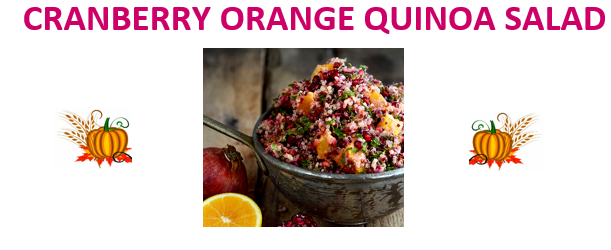November 19th, 2015

While mouthwash goes a long way in improving your oral care, it is not a substitute for flossing. Mouthwashes and flossing provide different benefits that you should understand.
Mouthwash Benefits
Mouthwash comes in two categories. Some are considered cosmetic. This type of rinse provides temporary relief from bad breath and has a pleasant taste. These do not actually kill any bacteria.
Therapeutic mouthwashes provide the healthier benefits. These may contain different ingredients including fluoride or antimicrobial agents. This type is used to remove plaque buildup and reduce the potential for calculus formation. Therapeutic rinses can also help prevent cavities, bad breath, and gingivitis. In addition, Dr. Robert Wortzel can prescribe special rinses to assist patients after periodontal surgery or other procedures.
Flossing Benefits
Flossing is what removes the plaque formation before it can harden and become calculus. While a rinse reduces buildup, only flossing will fully remove plaque, especially between teeth. The bristles on a toothbrush do not get between teeth completely. If plaque is not removed, it hardens into tartar or calculus. When this builds below the gum line, gum disease can start.
Types of Floss
Floss is available in a thin string form or a tape. It can be waxed or unwaxed. If you find flossing difficult, you might want to try a different type of floss. You can buy bulk floss in containers or purchase the disposable type with a plastic handle attached. This style can be easier for many individuals to use. Interdental picks are available for bridgework or other situations where regular floss cannot be used.
If you have questions regarding the best mouthwash or floss, or need tips for easier flossing, please ask our Mountainside, NJ team for advice. We will be glad to give you solutions to help keep your mouth clean and healthy.
November 16th, 2015

Wortzel Integrative Dental Care recently teamed up with the Union County Senior Citizen Counsel. "Senior Citizens often are an age group whose dental needs are not given enough attention. Xerostomia (Dry mouth) and periodontal disease (gum disease) are the two main diseases that lead to loss of teeth," said Dr. Robert Wortzel.
Recently the dental team participated in the annual Senior Citizen Health Fair for Union County at L' Affaire in Mountainside where over 300 seniors were able to gather information on important health topics. Dr. Lisa Wortzel and Dr. Mumta Hathiramani educated the members about the importance of routine dental care and oral cancer screenings for all interested seniors. Additionally, both doctors provided oral cancer screenings for all who were interested. "We were thrilled by the enthusiasm of all the seniors we spoke with. We are so happy to be a part of dental team that takes a proactive approach to oral health care especially for a growing population with unique dental needs," said Dr. Lisa Wortzel and Dr. Mumta Hathiramani.
Please read below for important information about Oral Cancer and Dry Mouth that was provided at the health fair.
WHAT YOU SHOULD KNOW ABOUT HAVING DRY MOUTH:
Dry mouth can be caused by increase in age, smoking, multiple medication use (especially blood pressure and depression medication).
There are many problems caused by dry mouth syndrome such as:
- Irritation of the soft tissue in the mouth which leads to sores and infection
- Tooth decay and gum disease
- Increased rate of cavities and bad breath
WHAT YOU SHOULD KNOW ABOUT ORAL CANCER
- Each year in the US, 40,000 new cases of mouth and throat cancer are diagnosed and HALF of those patients die within 5 years
- Risk factors
- Tobacco use
- Excessive alcohol consumption
- Use of betel nut and bedis
- Excessive unprotected exposure to sun
- Low intake of fruits and vegetables
- HPV 16 viral infection
- Increase in age
- Race and ethnicity
- Recurrence
- Gender (higher chance in males)
- Early Indicators
- Red and/or white discolorations of soft tissue in mouth
- Any sore that does not heal within 14 days
- Hoarseness that lasts for prolonged period of time
November 12th, 2015

There is no substitution for a natural healthy tooth. Dental fillings are intended to replace tooth structure and restore a tooth damaged by decay (a cavity) back to its normal function and shape. Silver (amalgam) and tooth-colored (composite) fillings last a long time, though they can develop decay when the integrity is compromised by open margins, fracture, or recurrent decay. In this blog, we discuss the signs and symptoms that indicate your filling may need to be replaced in order to prevent further complications.
Amalgam fillings are made of an alloy (mixed metals) that expands and contracts. They have no bonding properties, and so to place an amalgam filling, the hole in the tooth may need to be larger. Because of these two factors, fractures frequently occur. There are three types of cracks that are commonly associated. Craze lines are superficial with no treatment needed. Fractures extend along other parts of the tooth and may require a filling replacement or crown. Cracks extend toward the root and can require a root canal and crown or, if too severe, extraction.
A filing needs to be sealed to the tooth. If the seal between the tooth and the filling breaks down, food debris and bacteria can seep down under the filling and cause recurrent decay. If the decay is treated early, replacing the filling is adequate. If not, a crown and even a root canal may be needed. The biggest mistake you can make is waiting to do something about a broken or unsealed filling until it is painful. Doing this will only make the treatment more involved and often times more expensive.
Regular dental exams and X-rays are used to evaluate dental fillings. You will not be able to tell on your own when your fillings start to fail. Just as a car mechanic will change the oil, correct your alignment, or change your tires, a dental checkup will help you identify small concerns to fix as you go in order to avoid a critical emergency.
Pay attention to any bite or temperature sensitivity in teeth that have fillings. This can be an indicator for some of the problems listed above. You know your teeth better than anyone. Your observations are most valuable when evaluating a filling for replacement. If replacement is needed, know you are doing what is best to prevent future dental calamities and make an appointment to see Dr. Robert Wortzel.
November 10th, 2015

The perfect, easy, and colorful side dish for your Thanksgiving feast!
Ingredients:
- 1 cup quinoa
- 2 cups water
- 2 large leaves of kale
- 2 cups fresh cranberries
- 2 TBS extra virgin olive oil
- 1 tsp honey
- 2 TBS orange zest, grated
- 6 small oranges
- 1/4 cup mixed nuts
- 1/4 cup pomegranate arils
- 1/4 cup freshly chopped mint
Directions:
- Rinse 1 cup of quinoa with water
- Bring 2 cups of water to boil and then add quinoa and keep at a boil
- Cover, reduce heat to low and continue to cook until the water is gone (about 12-15 min).
- Wash, remove from stems and finely chop 2 large leaves of kale
- Pulse in a food processor to coarsely chop your 2 cup gresh cranberries, 2 TBS extra virgin olive oil and 1 tsp of honey.
- When quinoa is done, transfer to a mixing bowl and mix with chopped kale. Allow to cool to room temperature.
- Stir in 2 TBS orange zest into quinoa and kale.
- Peel and coarsely chop 6 small oranges.
- When quinoa is cooled, stir in cranberry mixture, chopped oranges, 1/4 cup mixed nuts, 1/4 cup pomegranate arils and 1/4 cup of dreshly chopped mint.
Healthfully Yours,
Wortzel Integrative Dental Care.
*For more recipes, please “Like” us on Facebook and follow our blog for monthly healthy recipes*




